Guyanalı Çin Mutfağı Füzyonu Açıklaması
{44 dakika} okundu Çin göçünün Guyana’nın tatlarını nasıl şekillendirdiğini keşfedin—wok'ta kızartılan chow mein'den biber sosuyla lezzetlendirilmiş kızarmış pirince kadar—tarih, imza yemekler, teknikler ve otantik Guyanalı-Çin füzyonunu nerede tadabileceğiniz. Ekim 09, 2025 00:09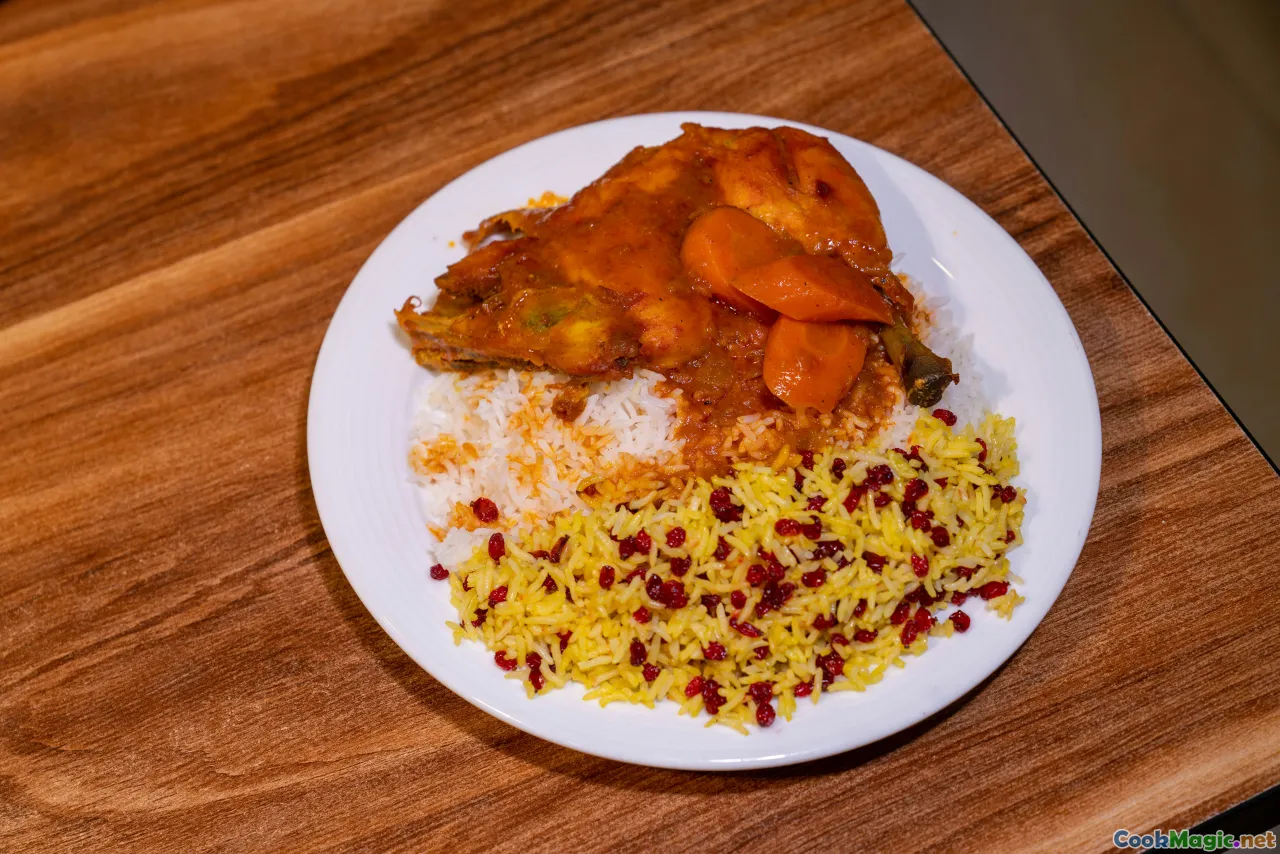
The smell that hooked me wasn’t the sweet smoke of pepperpot or the buttery blister of a roti on tawny iron. It was a fast, high heat perfume—garlic flashing in hot oil, a lick of toasted sesame, and soy sighing into steam—chasing the scent of wiri wiri peppers that make your nose tingle before your tongue ever touches heat. I was walking past Stabroek Market in Georgetown, past pyramids of bora and carrots and cabbage, when the unmistakable sizzle of a wok met the sunwarmed perfume of tropical fruit. Someone—just inside a stall framed with yellowed menus—was tossing chow mein Guyanese style: a tangle of noodles glossy with dark soy, tossed with cilantro-bright green seasoning and those snappy, emerald slivers of long bean. This is the fusion of Guyanese Chinese cuisine: a conversation between Canton and Demerara spoken in heat and herb, in chew and crunch, in comfort and crackling surprise.
The Silk Road of the Guianas: How China Met Guyana
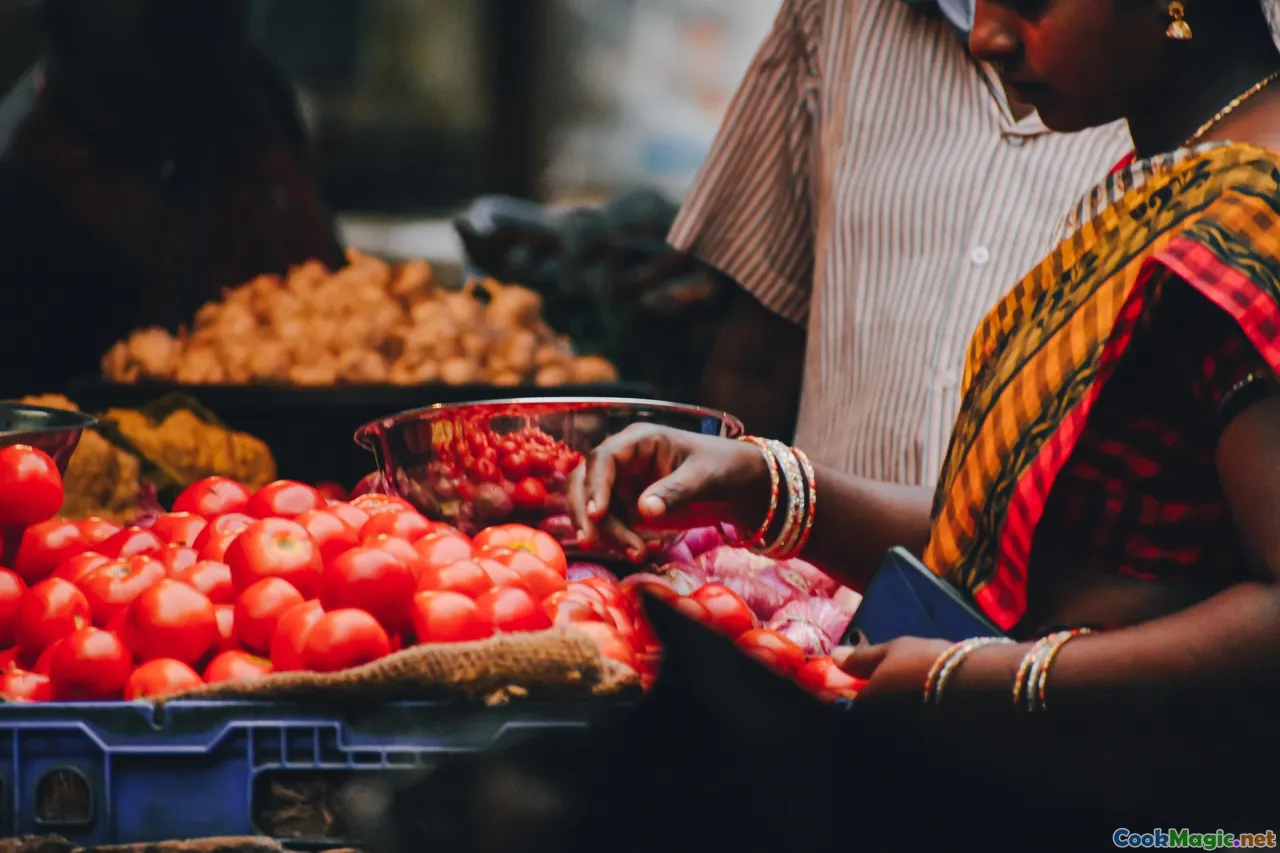
The first Chinese arrived in what was then British Guiana in the mid-19th century, drawn into the same complex migration currents that brought Portuguese, Indians, and others after emancipation shifted the labor of sugar estates. Many came from southern China—Cantonese and Hakka communities—bringing with them a food grammar that prized freshness and balance, speed and flame. They settled in Georgetown and along the coast, opening shops (people still remember the “Chinee shop” as a place of bolts of cloth, tins of milk, and small miracles), raising families, and building associations that tethered memory to the mouth.
But to cook in Guyana is to contend with the landscape. Rivers inked with tannins, markets bright with bora and pumpkin, wiri wiri peppers like cherry marbles, culantro leaves as green as new promise—these ingredients insisted on themselves. Chinese cooks adapted. Instead of gai lan, there was pak choi grown in kitchen gardens. Instead of Sichuan chilies, there was the fragrant, fruity burn of wiri wiri. Soy sauce met cassareep, that dark Amerindian elixir pressed from cassava, and a spoon of burnt sugar “browning” from Afro-Guyanese kitchens glossed stir-fries with a sweetly bitter grace.
Cuisine is history that survived the pot, and Guyanese Chinese food is the taste of hybrid survival. It is also joy. If you walk Regent Street on a festival night, you might catch lion dance drums vibrating against metal shutters while someone inside flashes shrimp in a wok with ketchup and chile, because ketchup—yes—is part of the language here too, tossed in with oyster sauce to lacquer pepper shrimp with happy red.
The Pantry of a Guyanese-Chinese Kitchen
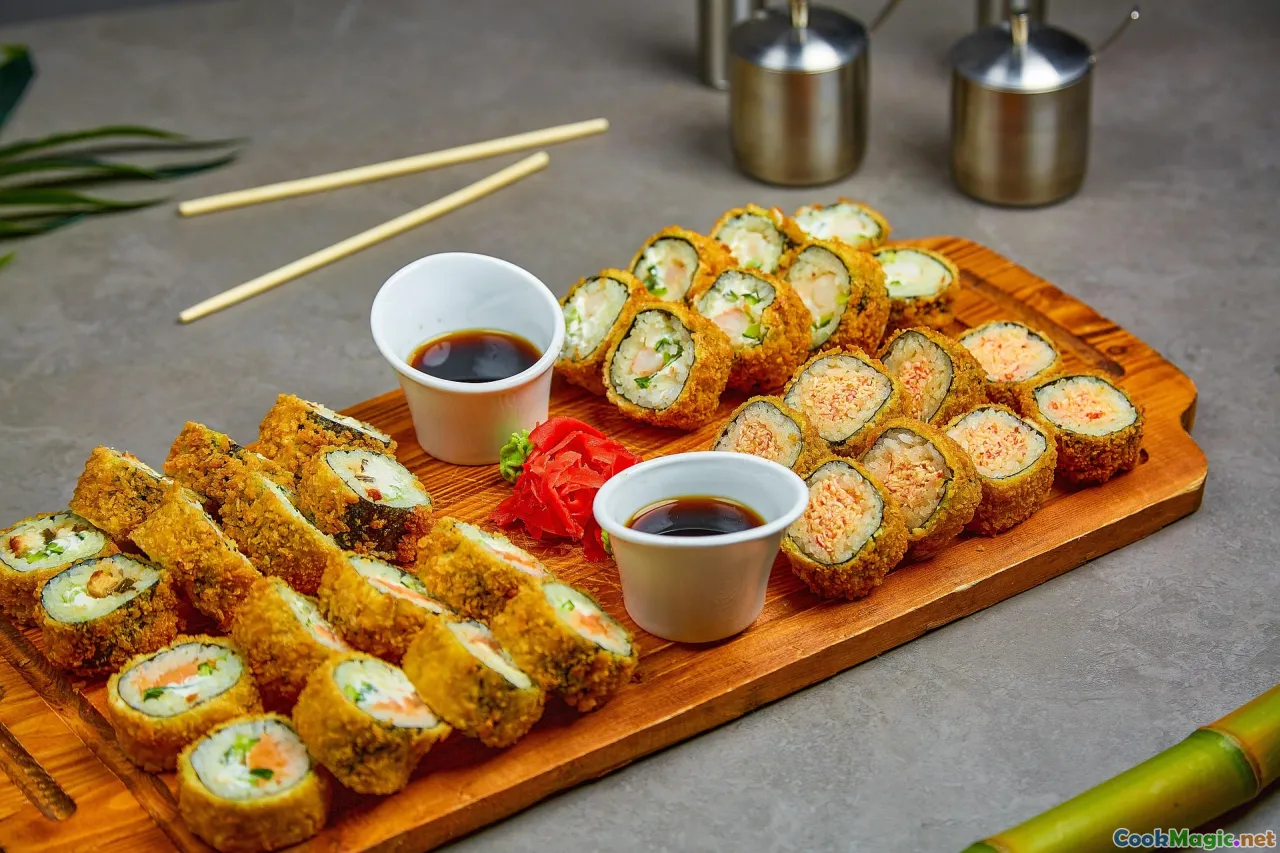
Walk into the working pantry of a Chinese-Guyanese home cook—Auntie Mei in Kitty, say—and you’ll find the logic of fusion lined up in bottles and bundles.
- Soy sauces: Light soy for salinity and brightness; dark soy for malty color and depth. Pearl River Bridge might share a shelf with a local “browning” used for stew chicken.
- Oyster sauce: Caramel brine in a bottle; essential for fried rice and quick vegetable glazes.
- Five-spice powder: Anise, clove, cinnamon, fennel, Sichuan pepper—whispered into roasts and occasionally, subtly, into fried chicken.
- Sesame oil: A finishing perfume, not a cooking medium. A drop wakes up fried rice like fresh lipstick wakes a smile.
- Green seasoning: The Guyanese magic—blended scallion, garlic, culantro (shadon beni), thyme, celery leaves, sometimes a breath of vinegar. It threads through everything from chow mein to baked chicken.
- Wiri wiri pepper: Bright, cherry-round, dangerously cheerful. It lends a tomato-like fruitiness with serious heat.
- Bora (yardlong bean): Snappy, grassy-sweet, a cousin of green beans but leaner, squeakier; it keeps its bite in a blazing wok.
- Pak choi and callaloo: Local greens that handle stir-fry heat without sulking.
- Cassareep: The deep, sticky kiss of Amerindian culinary science; sometimes a spoonful sneaks into a marinade for color and quiet bitters.
- Rice (parboiled or jasmine): For fried rice, last night’s is best—dry and cool so grains stay loose and toasty.
- Chow mein noodles: Firmer, sometimes eggy, with a spring that holds up to high heat.
This pantry sets you up to cook in a key that feels unmistakably Chinese but sings with Guyana’s vernacular. You’ll find ketchup there too; energy-dense and sunny, it brings a round, kid-invited sweetness to pepper shrimp that somehow works—like a steelpan solo over a string quartet.
The Flavor Equations: Wok Hei Meets Green Seasoning
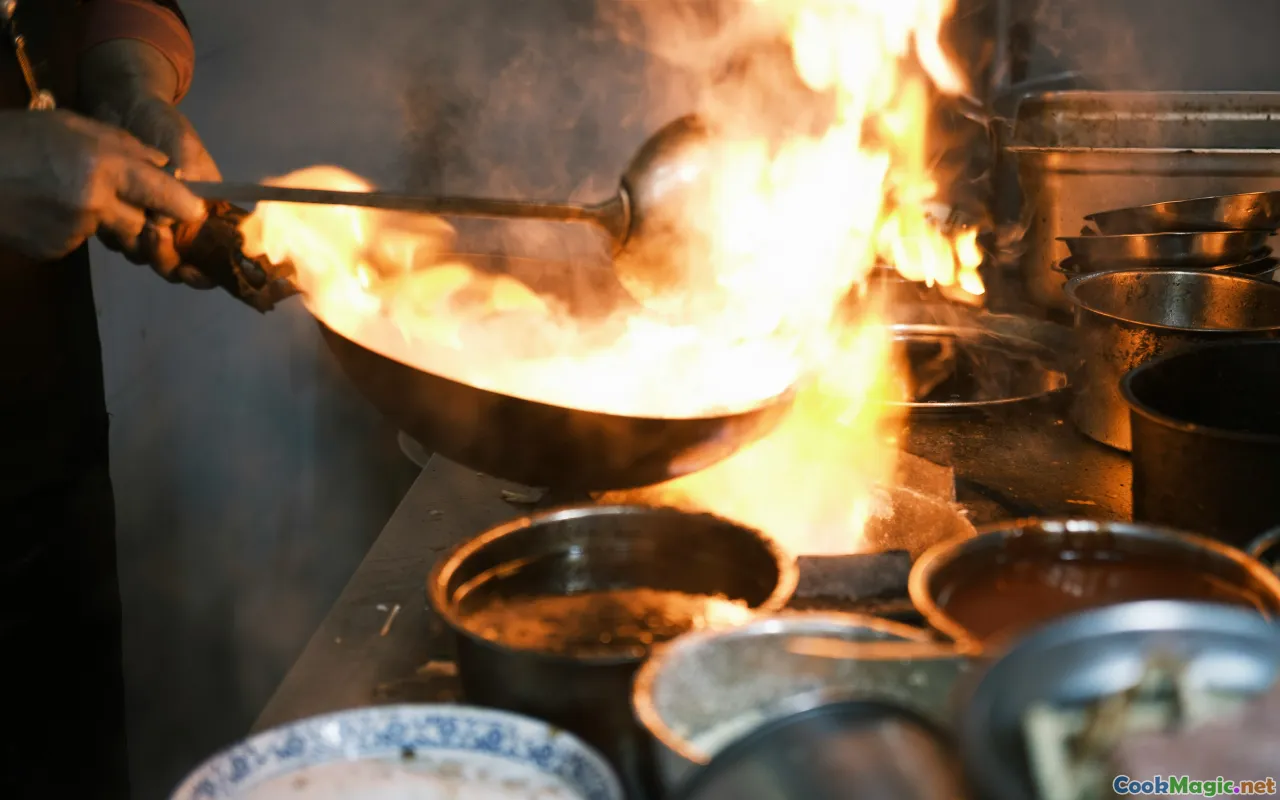
The best Guyanese Chinese cooking works on simple equations—technique plus terroir yields style.
- Equation 1: Wok hei + green seasoning. Wok hei is the smoky, toasty breath a wok puffs into food when metal is hot enough to seize oil and singe edges. Toss in green seasoning and you get perfume; the cilantro and culantro volatilize, the garlic flashes, and suddenly noodles smell like a market at 7 a.m.—wet herbs, sunshine, and possibility.
- Equation 2: Dark soy + browning. A few drops of browning (or a spoon of cassareep) painted onto chicken or cooked into rice combine with dark soy to summon that oxblood sheen you see on Georgetown takeout. The molasses depth plays with the mineral, caramelized notes of high-heat stir-fry.
- Equation 3: Wiri wiri + oyster sauce. Oyster sauce rocks the low notes; wiri wiri taps the high. Together they taste like the Caribbean taught Cantonese sauce how to whistle.
- Equation 4: Bora + noodle. Long bean is a texture gift—crisp-creamy inside, squeaky outside—packed with chlorophyll. It keeps its spine in the wok, standing up to the chew of noodle or the gloss of fried rice.
The result is food that feels familiar if you’ve eaten Cantonese stir-fries, but the edges are different. Instead of white pepper’s polite cough, you get wiri wiri’s fruit-fire. Instead of sugar for caramel notes, a hint of browning’s fragrant bitterness. The signal is Chinatown; the noise is Demerara wind.
Street and Home: Where to Taste It in Guyana

If you’re hunting for a plate that explains the fusion, start in Georgetown where the city often feels like a dining room with mosquitoes.
- New Thriving Restaurant: It’s a name almost every Georgetown kid knows; a place where families crowd around revolving glass lazy Susans and discuss cricket while the waiter pours ginger beer. The fried rice there is chestnut-brown and smoky, riddled with char siu pork and scallion, with bora sliced at an angle for extra snap. The chow mein is slippery with sesame, fat with prawn and chicken, and flecked with carrot confetti.
- Bourda and Stabroek Markets: Behind pyramids of ochro and green mango, you’ll find small stalls that turn out paper boxes of “small chow and chicken” or “fried rice with pepper shrimp.” These are working people’s lunches; they are also a primer in balance and heat. Ask for pepper sauce on the side if you value your afternoon agenda.
- East Coast Demerara night spots: From Mon Repos to Better Hope, vendors set up at dusk, smoke curling from street woks. You’ll smell it before you see it. The sound may be Bollywood on a radio or soca thumping from a bass box. The plate in your hand will be Guyana.
At home, the cooking feels even more personal. A Chinese-Guyanese family’s Sunday dinner might swing between baked chicken drenched in green seasoning and a bowl of steamed whole fish with ginger and scallion—a Cantonese heartbeat—next to a platter of chow mein perfumed with thyme and culantro. You’ll always hear someone ask, “Who bring de pepper sauce?” because the little glass bottle decides the meal’s tempo like a metronome.
Signature Dishes You Should Know

-
Guyanese-Style Fried Rice: Pirinç, soya sosu ve hafif browning ile kahverengileşir; char siu veya Çin usulü kızarmış tavuk parçacıkları, tereyağında kırpılmış yumurta, bezelye, bora ince dilimler ve havuç, kırpılmış havada daha ince ve yumuşak bir tur vardır. Bazı lokantalarda yağlılık daha az; otlar daha belirgindir; sonunda yeşil baharatın bir halo’su ve susam yağına dokunuş vardır. İyi olduğunda her tane ayrı kalır; mükemmel olduğunda kaşık tabağa vurur ve toasty parçaları kovalar.
-
Chow Mein, Georgetown Style: Sırtı olan erişteler; yumuşak ama canlı, lahana şeritleri, pak choi yaprakları, taze soğan, biber dilimleri ve bol protein—karides, tavuk ya da her ikisi—koyu soya ve istiridye sosu ile zenginleştirilir. Bazı aşçıların parlaklık ve denge için ketçap eklediği görülür. Wok’taki wiri wiri bir siren gibi; çoğu kişi masada biber sosuyla ekler ve kendi bas hattını istediğiniz gibi ayarlarsınız.
-
Pepper Shrimp: Başlı karidesler veya kabukları soyulmuş karidesler, sarımsak, zencefil, taze soğan, istiridye sosu, ketçap ve doğranmış wiri wiri ile sıcak sıcak karıştırılır. Yapışkan, baharatlı, oldum olası iştah açıcı—parmaklarınızı yalatıp burnunuzu akan bir tür tat bırakır.
-
Mixed Vegetable with Cashew: Sotelenmiş havuç dilimleri, bebek mısır, karnabahar topları ve bok-choy sapları, soya ve ısıdan kenarlarında kızarmış; kavrulmuş kajularla ve zencefil nefesiyle taçlandırılmış.
-
Char Siu (Guyanese Style): Soya, beş baharat, sarımsak, cassareep veya browning ile marine edilmiş domuz eti; çoğu zaman nostaljik renk için az miktarda kırmızı gıda boyası kullanılır. Kenarları karamelize olana kadar kavrulur, sonra ince dilimler halinde kızarmış pirinç için veya ballı parlak vernikle lakelenir.
-
Chinese Cake (Guyanese Bakery Favorite): Kısa hamurlu, yumuşak kırıntılı ve dolgu olarak tatlı kırmızı fasulye ezmesi veya kış kavunu içerir—the Cantonese eşli keklerinden türetilmiştir ama artık yerel.
How-To: Guyanese-Style Fried Rice at Home

This recipe is written for a home stove that tops out below restaurant BTUs. The trick is management—of moisture, of heat, and of sequence.
Serves 4
Ingredients:
- 4 cups cooked jasmine or parboiled rice, chilled overnight and fluffed
- 2 tablespoons neutral oil (peanut or canola), plus more as needed
- 2 eggs, lightly beaten with a pinch of salt
- 1 small carrot, diced fine
- 1/2 cup thinly sliced bora (or green beans), 1-inch lengths
- 1/2 cup green peas (fresh or thawed)
- 2 scallions, whites and greens separated, sliced
- 2 cloves garlic, minced
- 1 teaspoon minced ginger
- 1 cup diced char siu pork or roasted chicken
- 1–2 teaspoons dark soy sauce
- 1 tablespoon light soy sauce
- 1 teaspoon browning or 1/2 teaspoon cassareep (optional but traditional)
- 1 tablespoon oyster sauce
- 1 tablespoon green seasoning
- 1 teaspoon toasted sesame oil
- Wiri wiri pepper or hot pepper sauce, to taste
- Fresh black pepper
Method:
-
Prep for speed. Line up your ingredients. Clump-free rice is non-negotiable; break it up in a bowl with your fingers before you go near heat. Keep a dry towel handy to wipe moisture off the wok between batches.
-
Egg ribbons first. Heat a wok or large skillet until very hot. Swirl in 1 teaspoon oil, then the eggs. Tilt and swirl into a thin sheet, just set, then slide onto a cutting board and slice into ribbons. Set aside.
-
Vegetables and aromatics. Add a tablespoon of oil. Flash the carrot for 30 seconds, then bora and peas for another 30 to 45 seconds—keep them crisp, we want squeak. Push to the sides. Add a bit more oil to the center, toss in garlic, ginger, and scallion whites until fragrant (15–20 seconds). Don’t brown.
-
Meat and rice. Add char siu or chicken; toss until hot with the veg. Wipe any moisture from the wok’s sides; add oil if it looks dry. Add rice, spreading it into a thin layer. Let it sit for 30–40 seconds to toast before stirring. Repeat once. Aim for a faint, toasty edge on some grains.
-
Seasoning. Sprinkle in dark soy, light soy, browning/cassareep, and oyster sauce around the edges so they hit hot metal before the rice. Toss to coat evenly. Add green seasoning and scallion greens. Taste and adjust—more soy for salt, more browning for color, a pinch of sugar if it needs roundness.
-
Finish. Fold in egg ribbons. Turn off the heat and drizzle sesame oil. Crack black pepper over the top. Serve hot with pepper sauce on the side.
Tips for success:
- Dry rice is king. If your rice is fresh, spread it on a tray and chill for at least an hour.
- High heat, small batches. If your pan is small, cook half at a time to avoid steaming.
- Don’t over-sauce. Guyanese fried rice is not sticky or cloying; it’s glossy and nimble.
What you’re tasting should be a flicker of smoke, the bump of char siu sweetness against soy-salty rice, the snap of bora, and that soft egg landing like a napkin placed neatly across your lap.
The Chow Mein You’ll Dream About

Chow mein is the dish that travels to parties in foil trays and comes home light. Here’s a base method you can riff on endlessly.
Serves 4
Ingredients:
- 12 ounces chow mein noodles (or thin egg noodles)
- 2 tablespoons neutral oil
- 2 chicken thighs, thinly sliced, or 8 ounces shrimp, peeled and deveined (or both)
- 1 tablespoon light soy sauce
- 1 teaspoon dark soy
- 1 tablespoon oyster sauce
- 1 teaspoon browning (optional)
- 1 tablespoon green seasoning
- 2 cloves garlic, minced
- 1 teaspoon grated ginger
- 1 small onion, sliced
- 1 cup cabbage, thinly sliced
- 1 cup pak choi, sliced (greens and stems separated)
- 1/2 cup carrot, julienned
- 1/2 cup bora or green beans, slivered
- 2 scallions, sliced
- 1 teaspoon sesame oil
- Pepper sauce or chopped wiri wiri, to taste
Method:
-
Cook noodles in salted water until just shy of tender. Drain and rinse quickly under cool water to stop cooking. Toss with a teaspoon of oil to prevent sticking. Set aside.
-
Heat oil in a wok. Stir-fry chicken with a pinch of salt and a teaspoon of light soy until just cooked; remove. If using shrimp, flash-cook separately until pink and just opaque; remove.
-
In the same wok, add garlic, ginger, and onion. Stir until fragrant. Add cabbage, carrot, and the stems of pak choi. Cook 1–2 minutes until relaxed but still bright. Add bora and pak choi greens.
-
Add noodles, returning protein to the pan. Pour in light soy, dark soy, oyster sauce, and browning. Toss vigorously to combine, adding a splash of water if needed to loosen.
-
Finish with green seasoning, scallions, and sesame oil. Taste and adjust. Add pepper sauce in the pan or serve it alongside.
The noodle should be shiny and bouncing, vegetables crisp-tender, the sauce subtle but layered. A sniff should give you garlic and scallion first, then that cilantro-culantro lift that says Guyana.
Pepper Shrimp, the Party Cipher
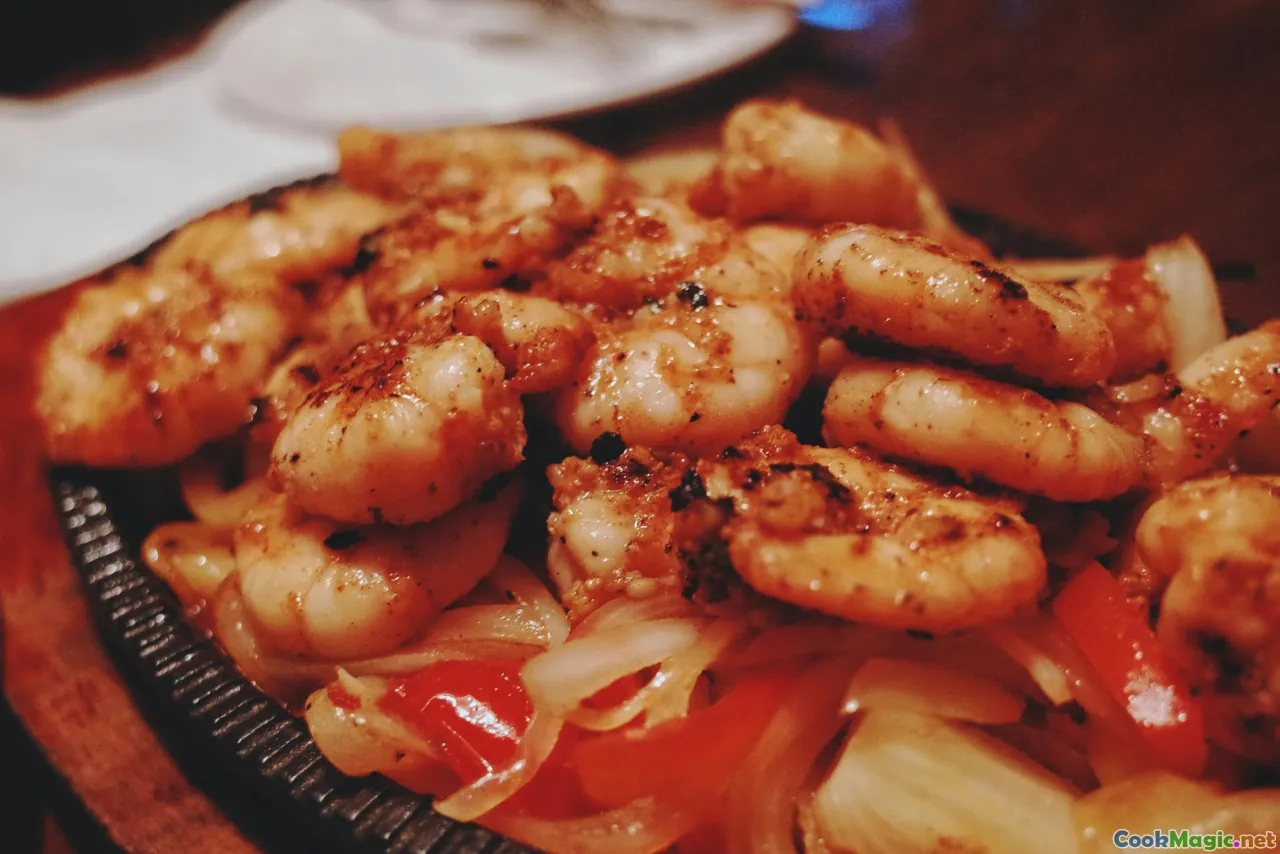
Quick, sticky, and perfectly improper with cold Banks beer.
Ingredients:
- 1 pound medium shrimp, peeled and deveined (or keep heads on for flavor)
- 1 tablespoon light soy sauce
- 1 tablespoon ketchup
- 1 tablespoon oyster sauce
- 1 teaspoon sugar
- 2 cloves garlic, minced
- 1 teaspoon grated ginger
- 1–3 wiri wiri peppers, finely chopped (or use a measured spoon of pepper sauce)
- 1 tablespoon neutral oil
- Scallions, sliced, for garnish
- Lime wedges
Method:
-
Toss shrimp with soy sauce and set aside while you heat a wok until shimmering hot.
-
Swirl in oil. Add garlic and ginger, stir for 10–15 seconds. Add shrimp in a single layer; leave them alone for 30 seconds before tossing.
-
Stir in ketchup, oyster sauce, sugar, and wiri wiri. Toss vigorously until shrimp are just cooked and sticky, 1–2 minutes. Squeeze a little lime over the top, shower with scallions, and serve immediately.
The glaze should cling glossy and bright. The smell should be chile and caramel with a briny backbone. It should make you text a friend.
What Makes It Different: A Comparison Across the Region

-
Versus Mainland Cantonese: Guyanese Chinese food shares technique but not quite the same palate. Where a Cantonese stir-fry might whisper, the Guyanese version speaks up thanks to green seasoning and hotter peppers. You’re also more likely to meet bora than snow peas, and a soft brush of browning for color and bitterness.
-
Versus Trinidadian Chinese: Trinidad’s Chinese food often leans sweeter and more tomato-forward (chow mein there often welcomes more ketchup). Guyana’s style tends to be a touch smokier with more pronounced herbaceous notes from culantro and thyme.
-
Versus Surinamese Chinese: Suriname’s Indonesian influences pull dishes toward kecap manis and sambal. Guyana’s version wears the belt of cassareep and wiri wiri instead.
-
Versus Jamaican Chinese: In Jamaica, Scotch bonnet peppers and ginger punch through, but you’ll notice less use of green seasoning and different vegetable choices. Guyana’s long beans and pak choi define the plate’s texture as much as its flavor.
None is better or worse; each is a dialect. What unites them is the Caribbean’s genius for translation.
A Christmas Table in Georgetown
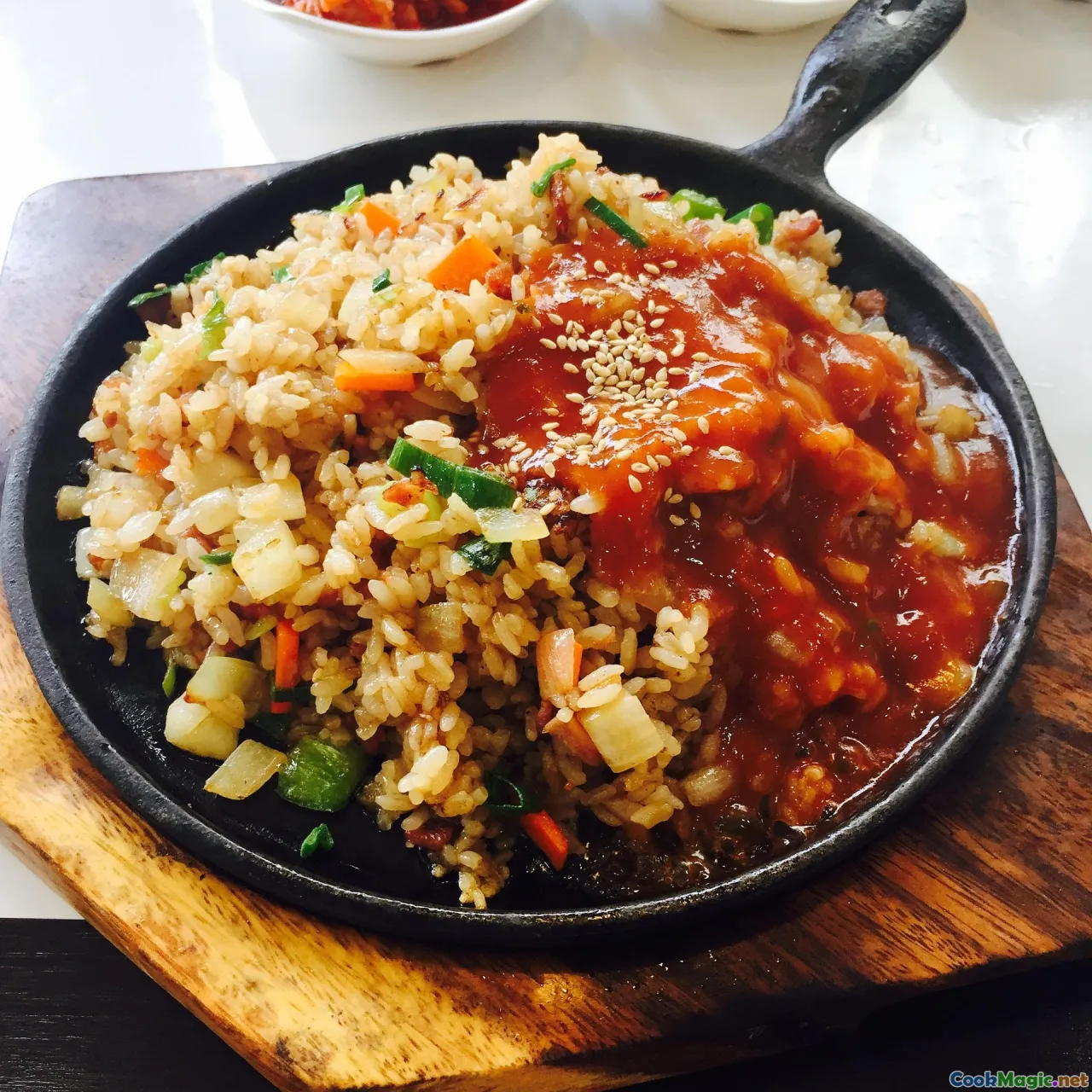
Ask a Guyanese what’s on the table at Christmas and you’ll get a litany that sounds like a long hug: pepperpot, homemade bread, baked chicken, garlic pork (a gift from the Portuguese), black cake weighed down with soaked fruit, sorrel wine fizzing with ginger. Listen closely and you’ll almost always hear “fried rice and chow mein” tucked in there, too.
On a Christmas morning I’ll never forget, I watched two aunties tag-team the stove while carols played on the TV. In one pot, pepperpot hissed like a cat when the lid cocked; that cassareep smell—dark and mysterious, sweet as morning molasses—filled the house. On the other burner, a wok spat at the touch of green seasoning. The fried rice was studded with bits of leftover baked chicken, crisps of bacon, and scallion. People drifted in, snatching tastes with spoons, and someone warned the kids off the pepper sauce with the same sternness they reserved for the presents.
That table said everything the history books on migration try to. Cultures do not sit politely on separate plates. They mingle, steal tastes, and adopt each other’s favorite shoes. A bite of chow mein next to pepperpot is a memory of boats, of sugar, of stubborn tenderness.
Banquet Nights: Ten Courses in Demerara
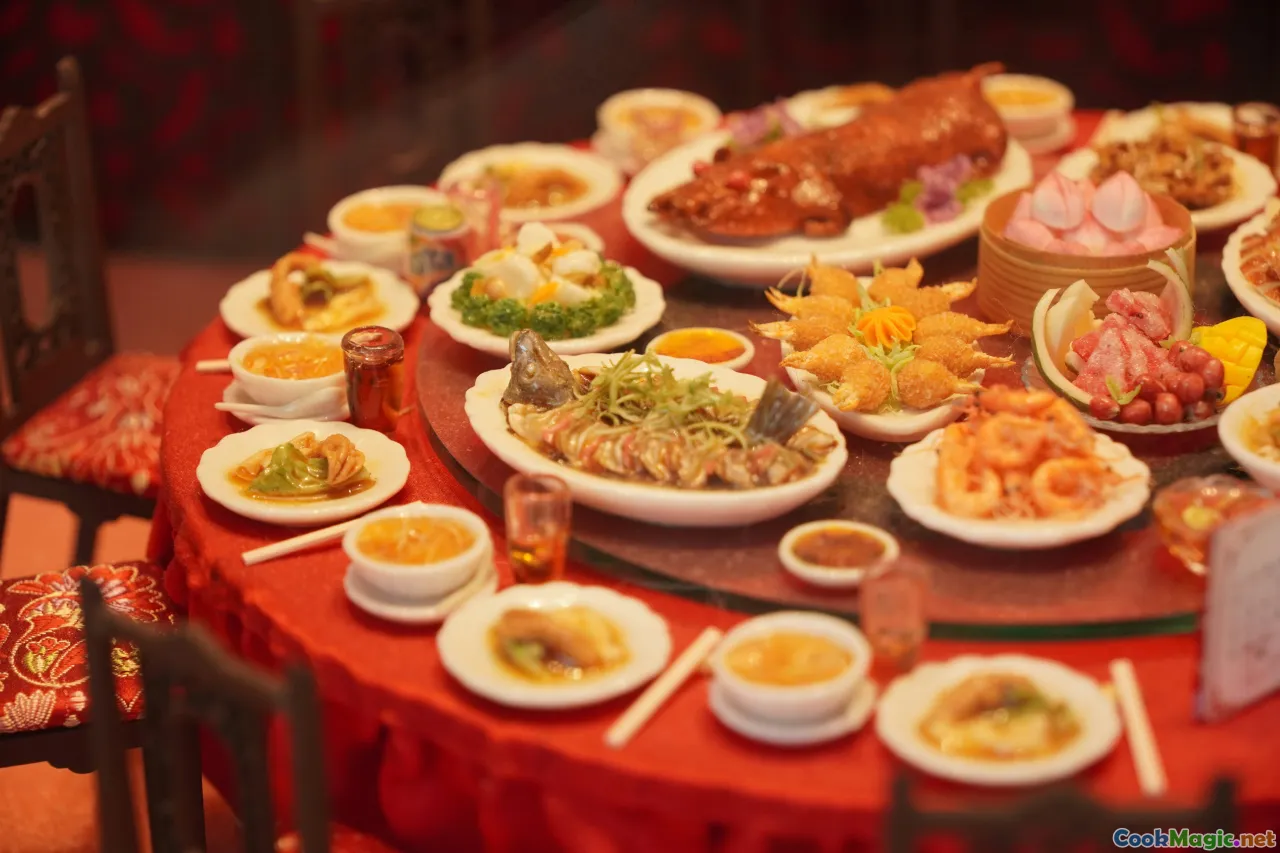
Step into a big Chinese restaurant in Georgetown on a wedding weekend and you’ll see round tables dressed in red and gold, chairs wrapped with celebratory bows. A lazy Susan gleams in the middle, and the first dish arrives before your camera’s lens unfogs from the AC.
Typical spreads might include:
- Crab and sweet corn soup, thick and comforting, with a shimmer of sesame oil.
- Cold jellyfish or pork appetizers if the hosts lean traditional.
- Soy-braised chicken with tender skin and prawn crackers snapping like a chorus.
- Steamed whole snapper with ginger, scallion, and hot oil poured over at the last second to waken the aromatics. The flesh flakes creamy; the soy tastes like the sea fell in love with a herb garden.
- Char siu and roast pork, arranged like lacquered jewels.
- Mixed vegetables with cashew for crunch and balance.
- Pepper shrimp for the mischief.
- A mountain of chow mein.
- Fried rice cut with char siu, egg, peas, and that particular touch of browning that makes it visually irresistible.
- Dessert pastries—pine tarts and Chinese cake—because Guyana loves a pastry that follows you into the street in a napkin.
At the happiest banquets, you’ll hear three languages of gratitude—a Cantonese toast, an English thank you, a creolese laugh—rolling around that table like marbles. The menu itself is a love letter in translation.
Vegetarians and the Long Bean: Plant-Forward Plates

Guyanese Chinese cooking is surprisingly generous to plant-forward eaters if you know how to ask. Bora and pak choi are natural wok stars, and tofu—found increasingly in supermarkets and markets—is a blank page for green seasoning.
Ideas:
- Bora and Mushroom Stir-Fry: Slice bora into 1-inch lengths; stir-fry with oyster mushroom (or cremini), ginger, and garlic. Season with light soy and a splash of vegetarian mushroom sauce. Finish with green seasoning and sesame oil.
- Pak Choi with Garlic and Wiri Wiri Oil: Warm a tablespoon of oil with a slit wiri wiri until the kitchen smells like trouble, remove the pepper, then stir-fry chopped pak choi with garlic until glossy and tender.
- Green Seasoning Tofu: Press firm tofu, then marinate in green seasoning, soy, and a dash of five-spice. Pan-sear until golden; toss with a handful of roasted cashews and blanched carrots.
Vegetarian fried rice, too, does not feel like a compromise when it crackles with scallion and has that kiss of browning and sesame at the end.
Tools, Heat, and Wok Hei on Caribbean Stoves
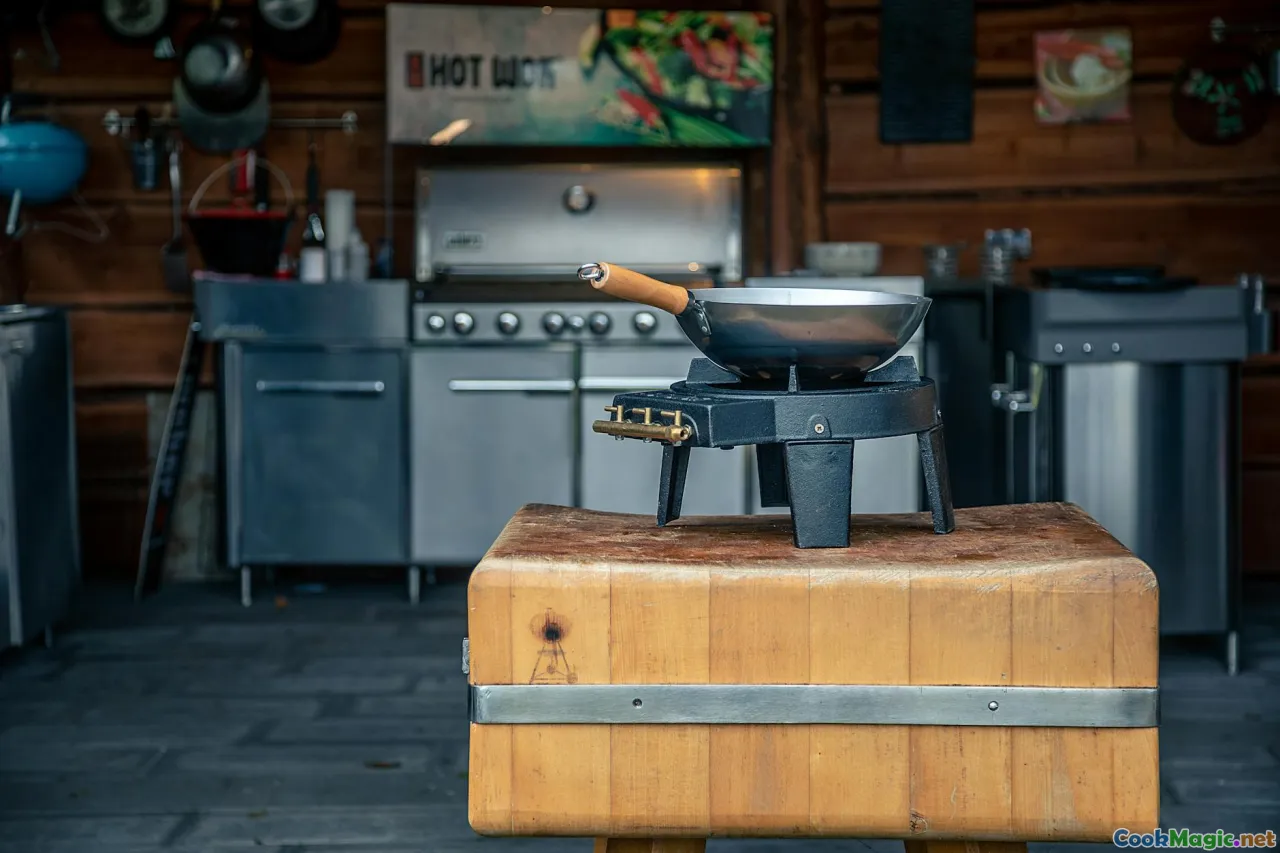
Everyone wants wok hei, but most of us don’t have a restaurant burner that sounds like a small dragon and breathes twenty thousand BTUs. Take heart. You can edge toward that flavor with technique.
- Use a carbon steel wok or a wide, heavy skillet. Carbon steel heats fast and tolerates high heat; it also seasons with flavorful varnish over time.
- Heat until faintly smoking before you add oil. This reduces sticking and boosts browning.
- Cook in small batches. Crowding creates steam; steam makes soggy noodles and rice that tastes like resignation.
- Dry your ingredients well. Washed vegetables should be patted dry; rice should be chilled.
- Add sauces around the edges of the wok. Let them hit metal first and flash-reduce; this concentrates flavor and keeps your dish from getting waterlogged.
- Finish with sesame oil off-heat. Its perfume burns easily.
Think of wok hei not simply as smoke but as the story of evaporation and Maillard reaction told quickly. Your ears will tell you when it’s working—the sound shifts from slosh to scratch as moisture leaves the pan and edges toast.
The Diaspora Plate: Georgetown to Queens and Toronto
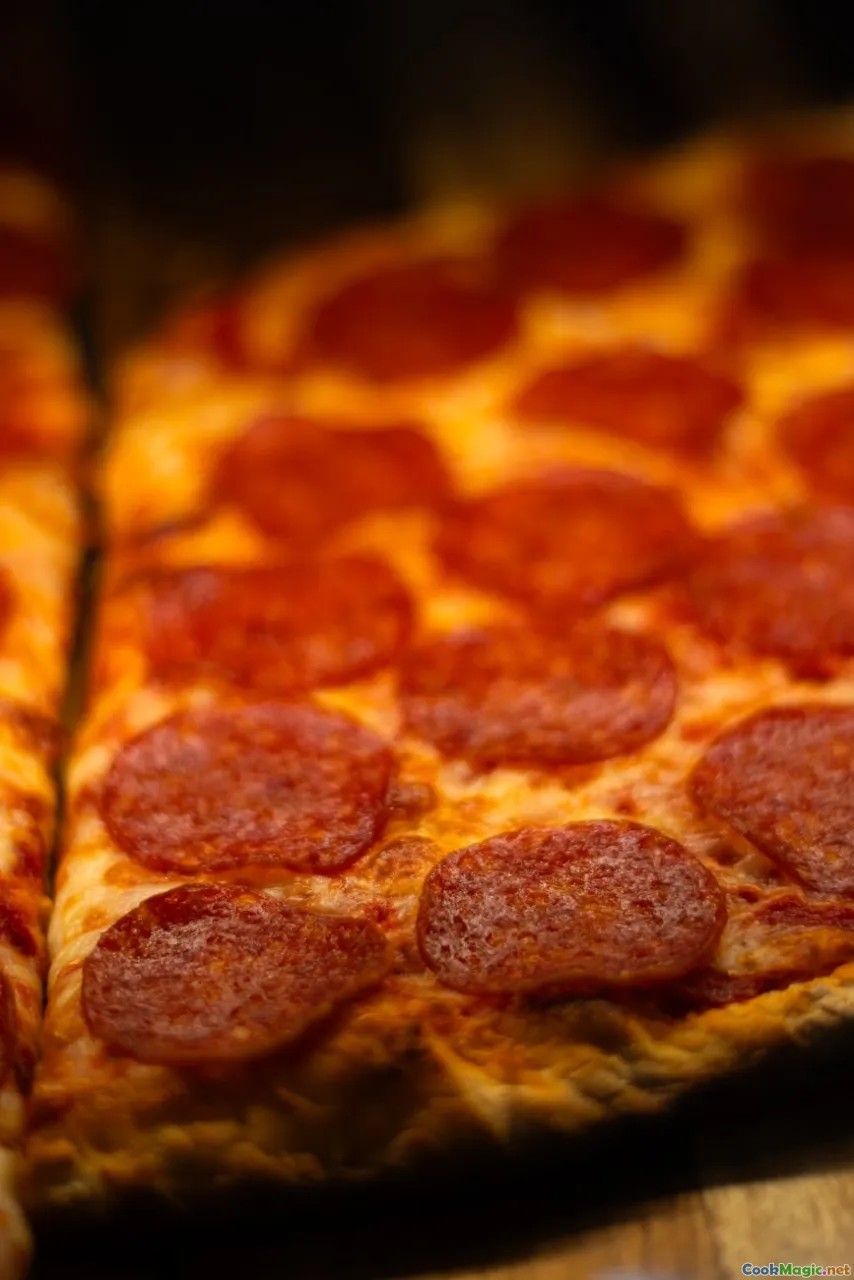
In Richmond Hill, Queens—where Guyanese bakeries perfume the air with pine tarts and black cake—you can find takeout spots serving “Guyanese-Chinese fried rice” in clamshell boxes packed tight. The rice is as brown and glossy as it is on Regent Street, with bora replaced by green beans when supply dictates, and pepper sauce dispensed in tiny cups that seem designed to test your bravery. In Toronto’s Scarborough, too, Guyanese and Trini neighborhoods host restaurants where you can order pepper shrimp that tastes like someone smuggled the Mon Repos breeze in their luggage.
Diaspora cooking sharpens nostalgia and tolerance alike. People adapt. In place of wiri wiri, they use bird’s eye chilies, cherry bombs, or Scotch bonnet with a careful hand. Culantro becomes cilantro plus a little extra thyme; cassareep, when hard to find, becomes a grudging splash of cola and molasses for color and bitters—imperfect but earnest. What remains intact is the shape of the plate: rice or noodles, crisp vegetables, charred edges, and a blast of heat that makes you talk louder while you eat.
At a potluck in a tiny Brooklyn apartment, I once watched a Guyanese-Chinese uncle stake his honor on fried rice. The pan was an old cast iron; the burner was skipping—he balanced it with a folded piece of foil like a wedge under a table leg. The result? Perfect grains, sweet pork, that back-of-the-tongue toasty note that makes you chase a second serving before you finish the first. That’s the secret: technique and memory can outrun equipment when they have to.
Bringing It Home: Shopping List and Substitutions

If you’re not in Guyana, you can still cook this food convincingly. Use these substitution strategies without apology.
Shopping list basics:
- Light and dark soy sauce (look for naturally brewed brands)
- Oyster sauce or vegetarian mushroom-based “oyster” sauce
- Five-spice powder
- Sesame oil (toasted)
- Jasmine rice
- Chow mein or thin egg noodles
- Garlic, ginger, scallion
- Culantro (shadon beni) if you can find it; otherwise cilantro plus extra thyme
- Thyme, celery leaves, and a green bell pepper for green seasoning
- Wiri wiri peppers or substitutes: bird’s eye, Thai, or even a Scotch bonnet used sparingly
- Bora (yardlong bean). If unavailable, very thin, fresh green beans sliced on the bias
- Pak choi or bok choy
- Cassareep (if you can find it in Caribbean markets); otherwise a tiny splash of molasses for color and bitters, recognizing it won’t be the same
- Browning (Caribbean burnt sugar), optional
Substitution cheat sheet:
- Culantro -> Cilantro plus a pinch of ground coriander seed and fresh thyme
- Wiri wiri -> Thai bird’s eye or Fresno chilies (for fruitiness) with a little tomato paste to mimic wiri wiri’s roundness
- Bora -> Haricots verts (very thin green beans), sliced on a deep bias for similar texture
- Chinese cake -> Use red bean paste from an Asian market to fill a tender shortcrust pastry
Green seasoning formula:
- 1 bunch scallions, 1 cup cilantro (or culantro if you have it), a handful of celery leaves, a few thyme sprigs, 4 cloves garlic, 1 small onion, 1 wiri wiri or 1/2 Scotch bonnet, 1 tablespoon vinegar, 2 tablespoons oil, and salt to taste. Blend to a spoonable paste. It should smell like someone opened a window.
A Short Story in Three Bites

First bite: A forkful of fried rice from a cardboard clamshell outside Bourda. The grains are warm as pockets, and there’s a nugget of char siu as sweet as it is smoky. Young you tries pepper sauce, and the air goes cold inside your nose before it becomes a furnace. You laugh with your mouth open.
Second bite: Chow mein at a cousin’s wedding. The lazy Susan spins like a record, and when it stops in front of you the noodles are glossy and tangled with shrimp. You can smell sesame oil rising as steam; it lands in your brain like deja vu. There’s a lion dance later—wiry young men under the costume, a drum like heartbeat—while from the kitchen comes the sudden crackle of the wok.
Third bite: Pepper shrimp, four apartments and a lifetime away, at a diaspora potluck. The windows are fogged and a child sleeps on the coats laid on a bed. You swipe a finger through the glaze at the corner of the pan after everyone else is done, and it tastes familiar and new at once. Someone asks for the playlist; someone else passes the pepper sauce; you wonder when you became old enough to love a kitchen this much.
Why This Fusion Works: An Analysis of Taste and Place

Guyanese Chinese cuisine rests on the sturdy legs of compatibility. Cantonese technique seeks balance and textural harmony; Guyanese ingredients arrive prepared to play those roles. Bora behaves like an ideal stir-fry vegetable; pak choi is a willing and enthusiastic canvas; wiri wiri peppers offer heat with melody rather than a solo of pain; culantro reads as cilantro’s bass clef, a depth note that makes chords richer.
Culturally, the fusion benefits from Guyana’s layered population. Afro-Guyanese, Indo-Guyanese, Amerindian, Portuguese, Chinese—each community held fast to anchors and sent out culinary scouts. The result is a food culture in which a Cantonese steamed fish sits beside dhal and rice without anyone blinking. The Amerindian invention of cassareep lends body and color to marinades and sauces that otherwise might be pale. The Indo-Guyanese comfort with spice and herb signals a green seasoning that amplifies everything it touches. Afro-Guyanese browning invites a controlled bitterness that—used judiciously—lifts soy-salty sauces toward complexity.
Emotionally, the cuisine is home-making in a place that asked much of newcomers and natives alike. Fast meals in small kitchens. Food meant to nourish shift workers, temple-goers, revelers, school kids, aunties balancing bags and babies. Fusion here isn’t a chef’s hat trick; it’s the economy of flavor born of necessity and a communal palate that likes brightness, heat, and honest texture.
A Cook’s Notes: Small Tips With Big Flavor
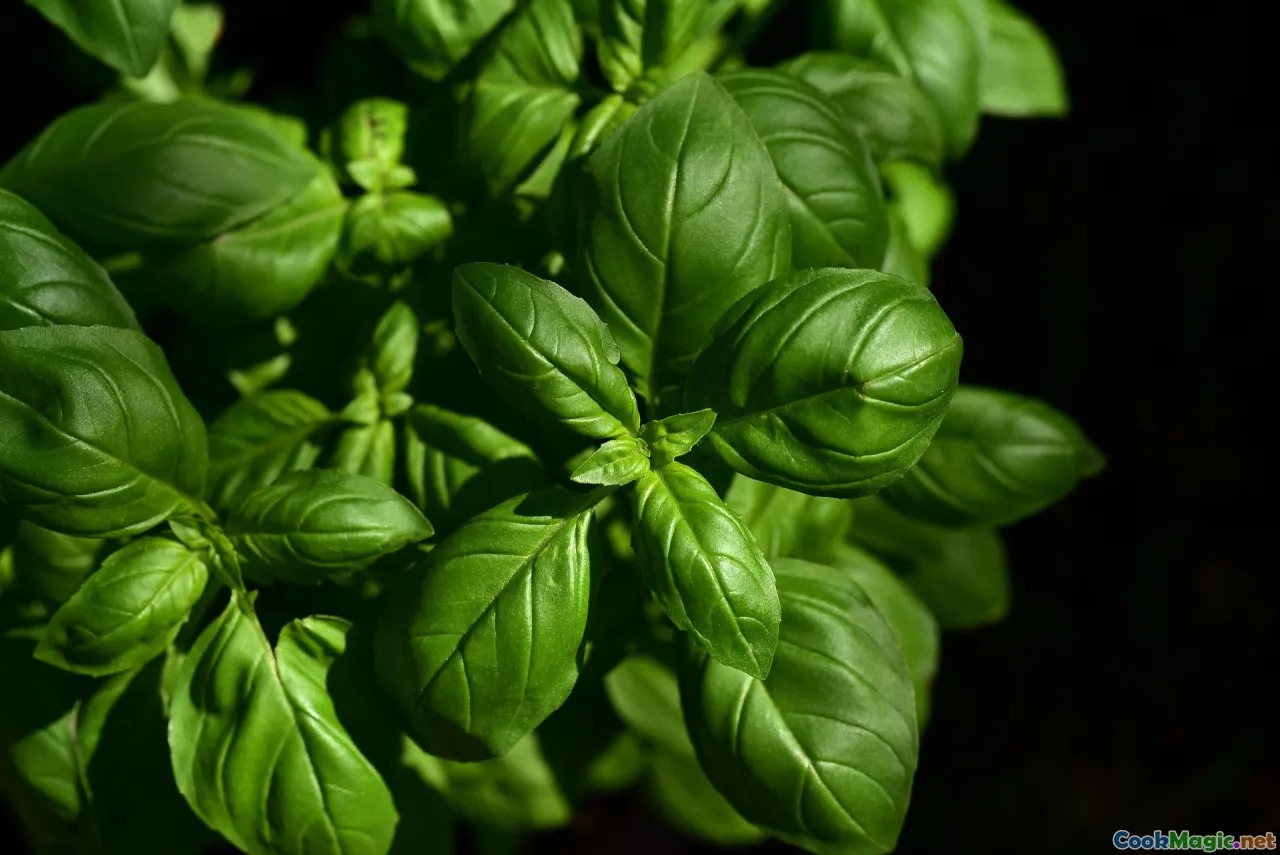
- Salt the noodle water. Under-seasoned noodles suck the life from sauce.
- Angle your knife. Bora cut on a bias cooks more evenly and looks joyful.
- Control your moisture. Wet vegetables and freshly cooked rice will steam; pat and chill.
- Pepper sauce last. Add wiri wiri raw heat at the table to keep the dish’s perfume intact.
- Reserve some scallion greens. Tossing fresh greens at the end resets the dish’s aroma like opening a new tab.
- Taste for bitterness. Browning and cassareep are beautiful but strong. Aim for a hint, not a headline.
- Keep ketchup honest. A spoon in pepper shrimp is authentic; two spoons is a children’s party.
Where Tradition Meets Today
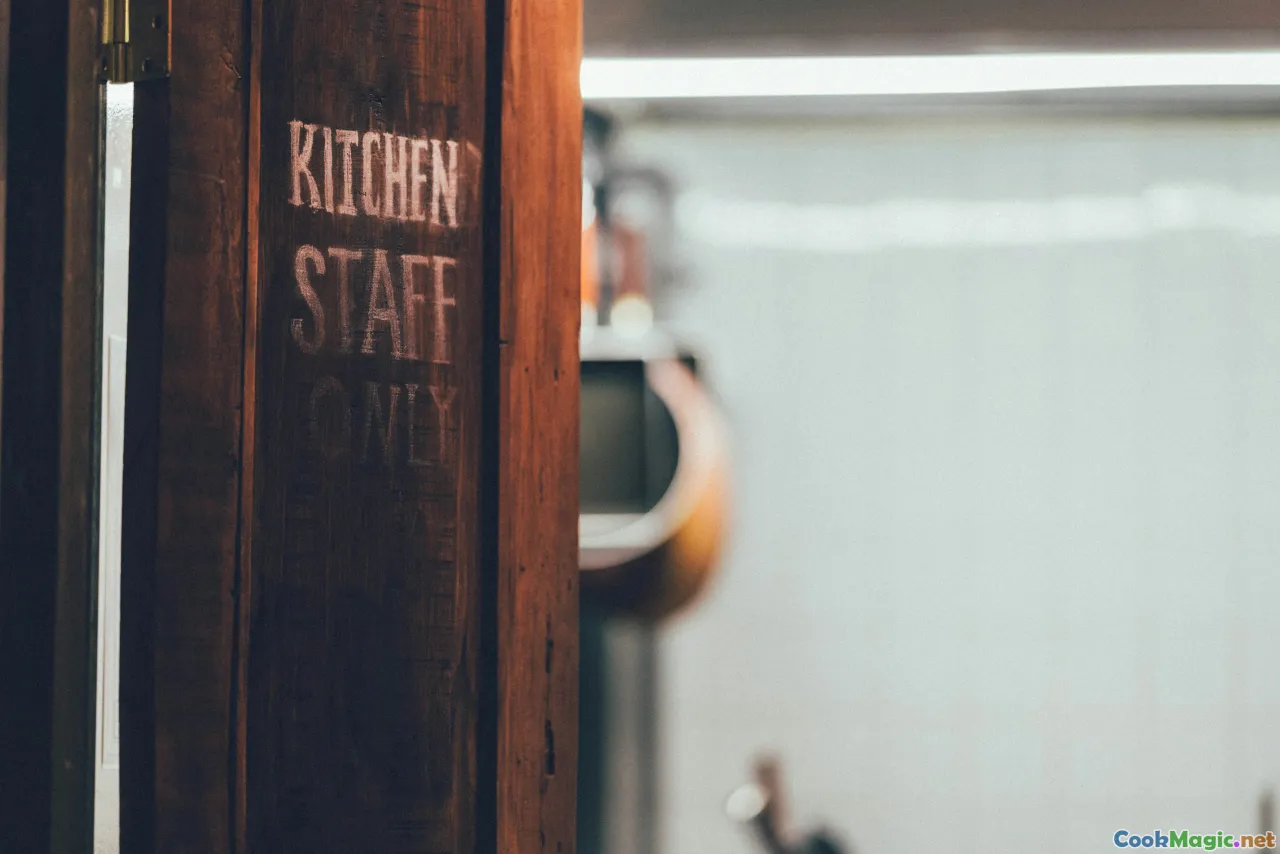
You’ll see younger cooks in Guyana drizzling chili crisp onto fried rice or sliding a poached egg onto chow mein as if it were ramen. You’ll taste sesame seeds toasted and tossed over vegetables because someone saw it on a feed and thought, why not? But you’ll also find the anchors holding: soy, garlic, ginger, green seasoning; the careful way a good cook listens to the pan; the way families reach for pepper sauce before they lift their forks.
In kitchens run by aunties and in restaurants where menus mix Chinese characters with English and creolese turns of phrase, the same courtesy prevails—feed people well, quickly, with flavor that announces itself but doesn’t shout you out of the room. Food that travels in foil. Food that eats well standing up. Food that can be a wedding and a weeknight.
If you go to Georgetown with an appetite, someone will tell you where to find the best chow mein that week; it changes, because cooks change jobs and burners, and because the first plate of the night often tastes different from the last. But the skeleton holds. What you’ll taste is history at a boil, tempered by neighborly advice and the heat of a small island of metal over flame.
One last plate: stand near a wok at closing time in a busy kitchen, when the metal is seasoned with a day of cooking and the cook is tired but still precise. Watch oil slide, hear the garlic pop like static, smell sesame lift just as the burner goes off. The noodles flash; the rice loosens; the shrimp blush. You carry the plate into the warm night air. It smells like Guyana speaking Cantonese, like Canton answering in creolese—like a story you’ll want to tell with your own pan at home.









